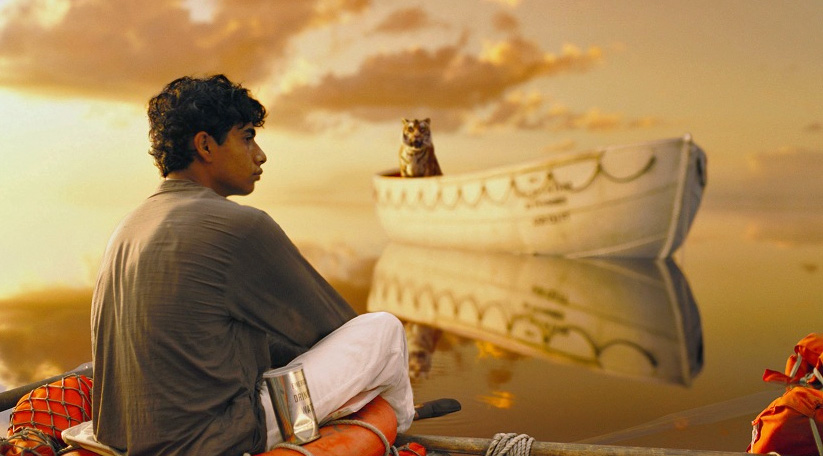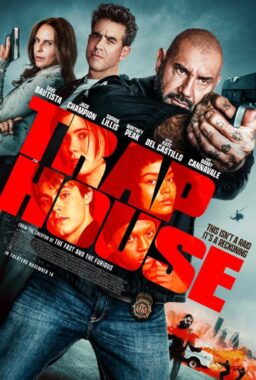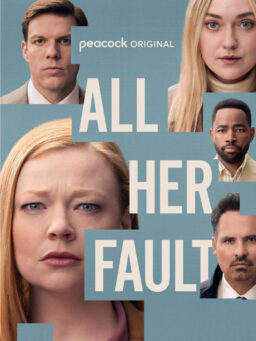“This is the best use of 3-D I’ve ever seen,” I say to Ang Lee. And I mean it. His “Life of Pi,” based on Yann Martel‘s novel about a shipwrecked boy, is an astonishment, not least because it never uses 3-D for its effect, but instead as a framing device for the story as a whole. There are, for example, shots where the point of view is below the sea’s surface, looking up at the boat and into the sky beyond. The surface of the sea seems to be an invisible membrane between the water and the air. I’ve never seen anything like it.
“Actually, years ago,” he told me, “I thought this was a pretty impossible movie to make technically. It’s so expensive for what it is. You sort of have to disguise a philosophical book as an adventure story. I thought of 3-D half a year before “Avatar” (2009), was on the screen. I thought water, with its transparency and reflection, the way it comes out to you in 3-D, would create a new theatrical experience and maybe the audience or the studio would open up their minds a little bit to accept something different.”
That’s what happened in my mind. I knew the premise as I went in — a boy floats across the Pacific sharing a boat with a Bengal tiger — and frankly it sounded like a Disney movie to me. It’s far from it.
Ang Lee and I were talking about “Life of Pi,” which opens Wednesday, during his recent visit to Chicago. I’ve known him a long time, he’s honored us with his presence at Ebertfest, and there’s a special connection because we both attended the University of Illinois at Urbana-Champaign. Over the years, I have decided he is one of the wisest and kindest men I’ve met. That emerged as he discussed the use of water as a medium.
“I wanted to use water because the film is talking about faith, and it contains fish, life and every emotion for Pi. And air is God, heaven and something spiritual and death. That’s how I see it. I believe the thing we call faith or God is our emotional attachment to the unknown. I’m Chinese; I believe in the Taoist Buddha. We don’t talk about a deity, which is very much like this book; we’re not talking about religion but God in the abstract sense, something to overpower you.”
During Pi’s journey, he survives against all odds and forms a union with the tiger, during which they both step outside any reality they know. One of the strange developments is that the tiger doesn’t kill the boy. That’s not a spoiler, because there is ever so much more to it than that. Yet there is an early scene, set at a circus, where it is unforgettably demonstrated that wild animals are truly wild and only a reckless person would think otherwise.
It was a wise decision, I said, to include the scene showing that nature is not sentimental.
“You have to. Because nature is not sentimental. Sentiment is a human thing; it’s humanity, it’s artificial, it’s our wishful thinking. And it’s a trap because when you make a movie, you project your own will, and it’s very likely you sentimentalize. A tiger doesn’t look back. It’s just the way it is.”
That will help younger viewers, who think tigers are their friends.
“They watch too many Disney movies. In the movie, the father’s lesson is specifically — if you think like that, you’ll be killed. Survive and respect nature and respect animals is what you should do. However, at the end, the boy says, ‘My father is absolutely right, but I see something else, something else I cannot prove it, but I see it, I feel it.’ I think that’s human emotion. To me, his love for the tiger is a one-way street, it’s unrequited love.”
An amazing aspect about the film is how realistic the tiger and every other animal appears. Viewers know special effects must be involved in some way, and yet … that is a tiger, right? Although I was completely absorbed by the story, I still found myself noticing and accepting the tiger as reality. That reminded me of when I interviewed Ang about “Crouching Tiger, Hidden Dragon” (2000), in which actors seem to skip lightly over rooftops and hold a sword fight in treetops. Those must be special effects, right?
“You absolutely astounded me,” I said, “when you revealed that the flying actors were not done with special effects, but were real people working with real wires.”
He grinned. “You know, people at Industrial Light & Magic asked me how I did those shots. I said — those are low tech! The feelings must be real, including the fear of the actress, which was real. It’s very difficult to imitate the real thing, to act it. But we couldn’t do that with a tiger. You really have to take references from real life. You cannot just imagine. Real happenings, real elements, they really need to be respected. I think it’s important that we respect the tiger as much as nature.”
To begin with, he took the real tiger as a reference point. “There are 23 shots in the movie of real tigers. There are four of them modeled after the most beautiful one, whose name is King. I don’t think we can do tigers just out of our imagination, at least for now, and project our wills and make them look like real animals without humanizing them. Some of the real tigers made it into the movie. But the animated tigers might have taken three months or six months. Anything that didn’t look real, at least to our impression, had to be redone. Tenaciously.”
As he spoke, his voice was soft and modest, and with none of the hype you sometimes hear in the voices of directors. He seemed gentle about his film, as if it was generated by love.
“You have never made an angry or ugly film,” I told him. That certainly includes his best film, “Brokeback Mountain” (2005), and in my opinion also includes “Hulk” (2003), which I invited to Ebertfest. “You seem filled with serenity. It could be called humanism.”
“Thank you, but I like drama, you know. Those years in Illinois really laid the foundation of what I do. I think what I do with film is externalize and visualize my dramatic feelings. In talking about drama, there’s a lot of anger and conflict, that’s what drama is about; that’s also what I do. I guess because of the nature of my disposition, it came out that way, as serene.”
How did Illinois shape that?
“My upbringing is that of harmony, and not conflict, you know. If you have a big problem, reduce to small problem, to no problem. That’s just the Eastern way I was brought up. My first culture shock, so to speak, or encounter with Western culture, was through dramatic studying. All those plays they choose for me in the theater department, they shocked me. They were sexual and conflicting, and some were sort of violent. Western plays maximize the conflict. But then there’s a tug of war, my Chinese side will also bring me to tranquility and reducing the conflict. On the other side, I want the extremes — to see things demolish, break up, that makes good scenes. And from there to examine humanity, which is what I care about.
“Another thing in Champaign-Urbana was I started reading. It was the Cold War era. I was raised in Taiwan. I never read communist books, anything red. It was censored; it was sanitized. And I went to the library and I just started to read all those communist books. That affected me in a big way, and also drama and left-wing [works]. It took me years to get back on my feet. I was young, I was unprepared.
“Also, I watched a lot of movies. In Taiwan, I grew up with Hollywood movies and Chinese movies. I didn’t see many art films. But then I went to all the film clubs to watch all those great movies I read about and never got to seeing. So I watched like seven to 10 movies every weekend.
“In film school, I just learned how to make movies. But what motivated me were dramas and culture shocks, self-examination, identity problems. In Champaign-Urbana, I was really shy and quiet; I didn’t speak English, I had very few friends, I couldn’t express myself, but things just kept coming into me. It took all my life to spill it out. You know, I was a very docile, tranquil kid, never a rebel or anything. But then I was turning upside down. Some of it didn’t come out until I was 45 or 50.”
That reminded me of my favorite Ang Lee story. This was at the 2001 Academy Awards. I was doing red carpet interviews for ABC. Ang was a best director nominee for “Crouching Tiger.” He came through the line with his wife and two children, and proudly said, “These are my Urbana children.”
The next time I saw him, he said a viewer of the telecast asked him, “What did you say your children had?”
“Had? What do you mean?
“You called them Urbana children.”












